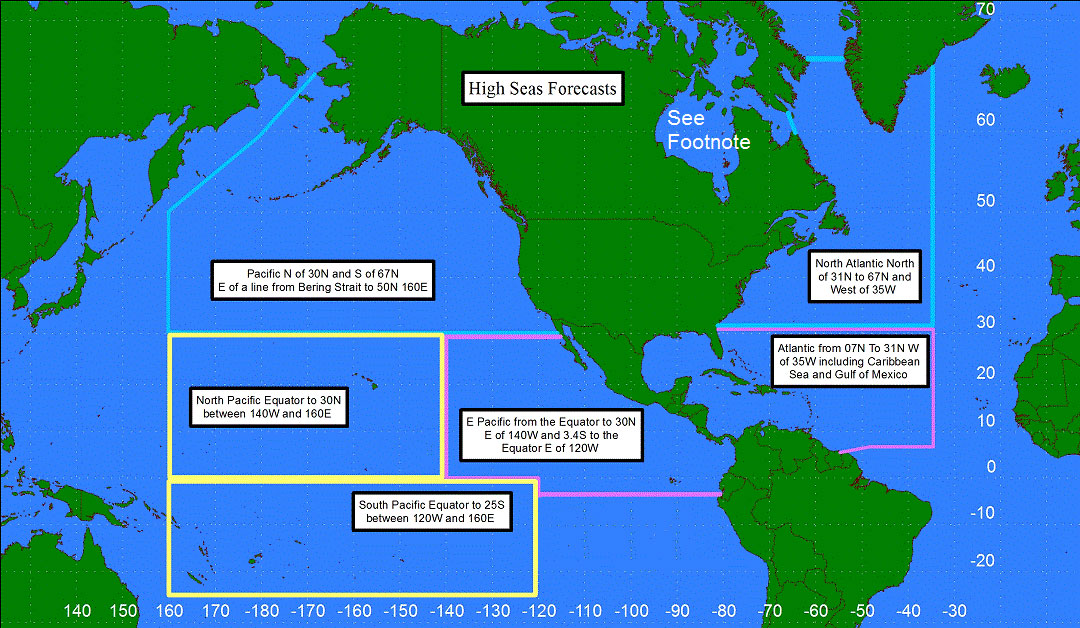What are High Seas Forecasts?
NOAA's High Seas Forecasts are weather forecasts and data transmitted around the world in real- and near-real-time.

NOAA's High Seas Forecasts are marine weather forecasts prepared for mariners and transmitted around the world in real- and near-real-time. Note: the above map i
Seafaring can be very dangerous for ships at sea. For centuries, little could be done to make shipping safer, due to the unpredictability of the weather, the vast size of the ocean, and a lack of international cooperation in the open ocean. However, the 1912 sinking of the "unsinkable" Titanic, with more than 1,500 casualties, sparked global concern about safety and standards for ships at sea. This tragedy would lead to new international conventions that established safety requirements and provided more accurate and standardized weather forecasts.
Today, National Meteorological and Hydrological Services around the world provide real- or near-real-time weather forecasts and data that are transmitted globally. The World Meteorological Organization’s (WMO) Global Observing System relies on member countries, which use their facilities on land, at sea, and in space via satellites to forecast weather conditions. Together, these resources allow meteorological and other environmental observations on a global scale.
As a member of WMO, NOAA's National Weather Service (NWS) provides High Seas Forecasts for large areas of the U.S. Atlantic and Pacific oceans. The NWS also provides marine forecasts for U.S. coastal areas and the Great Lakes, offshore waters, and part of the Arctic Ocean. The NWS’s Unified Surface Analysis of world weather also provides data on a complex set of surface observations. These forecasts from NOAA, as well as predictions from other National Meteorological and Hydrological Services around the world, are available to anyone, and, most importantly, to all ships at sea.
Social